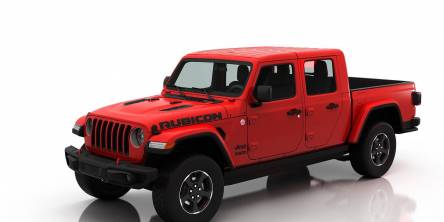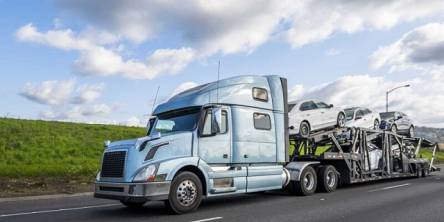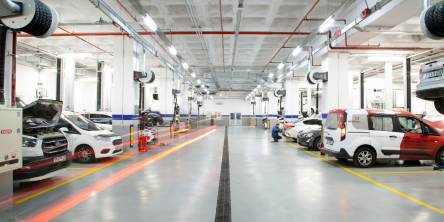14 Essential Tips for a Smooth Car Trip Across the US

Exploring the United States by car is an amazing experience. With so many stunning places to see, from national parks to charming small towns, you’ll want to make the most of your road trip. To ensure your journey is enjoyable and hassle-free, follow these practical tips for traveling around the US by car.
1. Consider leasing a car
If your trip is going to be long, car leasing might be a better option than using your own. Leasing can be more convenient and often cost-effective for extended trips. Make sure to arrange your lease in advance and check that you have adequate driving experience. Leasing also gives you the opportunity to choose a car suited to your travel needs.
2. Plan your route
Planning your travel route ahead of time can make a big difference. Create a detailed itinerary, including daily travel plans and stops along the way. Use tools like Google Maps to calculate distances and travel times. Look for interesting attractions and rest stops to make your journey more enjoyable.
3. Prepare for children
If you're traveling with children, a child seat is essential. You can either rent or buy one, but purchasing and later selling it might be more cost-effective for longer trips. Ensure your car has good safety ratings to protect your little ones. Also, plan frequent breaks to keep kids comfortable and entertained.
4. Use navigation tools
A GPS system can make navigating easier. To save money on GPS rentals (which can cost around $5 per day), bring your own device or download offline maps on your smartphone. This will help you find your way and avoid getting lost, especially in unfamiliar areas.
5. Be aware of road fees
Some roads and bridges in the US have tolls. For example, crossing the Golden Gate Bridge in San Francisco involves a fee. Many metropolitan areas also have toll roads. Consider renting a transponder with your vehicle to make toll payments more convenient and avoid delays.
6. Carry cash
Always have cash on hand, including small bills and coins. Some places, especially those off the beaten path, may not accept credit cards. Coins are particularly useful for toll machines and small purchases. Keeping cash available can prevent inconveniences during your trip.
7. Follow traffic laws
Adhere to traffic laws and speed limits. Avoid speeding by more than 5 miles per hour to prevent fines. When parking, ensure you’re not blocking other drivers or pedestrians. Pay attention to road signs and always give pedestrians the right of way, especially in busy or unfamiliar areas.
8. Watch out for wildlife
In areas near parks and forests, you might encounter wild animals. Pay attention to wildlife warning signs and be cautious, especially at night. Slowing down and being vigilant will help you avoid accidents and keep both animals and your family safe.
9. Stay hydrated
Keep plenty of water in your car, especially on hot days. Buying a large pack of water in advance and storing it in your trunk ensures you stay hydrated throughout your trip. It’s important to drink regularly, particularly on long drives.
10. Monitor your fuel
In some regions, gas stations can be far apart. Always keep your tank at least half full to avoid running out of fuel, especially when traveling through remote areas or national parks. This will save you time and prevent any stressful situations related to finding a gas station.
11. Pack an emergency kit
Always have an emergency kit in your car. This should include items like a first-aid kit, flashlight, extra batteries, basic tools, jumper cables, and roadside flares. It’s also a good idea to have a blanket, non-perishable snacks, and a basic repair manual. An emergency kit can be a lifesaver in unexpected situations.
12. Check your car before the trip
Before you hit the road, make sure your car is in good working condition. Check the oil level, tire pressure, and brake fluid. Ensure your brakes, lights, and windshield wipers are functioning properly. A pre-trip inspection can help prevent breakdowns and keep your journey smooth.
13. Consider travel insurance
Travel insurance can be a wise investment for your road trip. It can cover unexpected issues like car breakdowns, accidents, or medical emergencies. Look for a policy that includes roadside assistance and rental car coverage. Insurance provides peace of mind and helps you handle any unexpected problems that may arise.
14. Keep a travel journal
Documenting your journey can be both fun and valuable. Keep a travel journal or use a travel app to record your experiences, interesting places you visit, and memorable moments. Not only does this help you remember details about your trip, but it also provides a great way to share your adventure with friends and family later. Plus, looking back on your travel journal can bring back fond memories and insights about your travels.
Similar Articles
Before you lease a car, you need to understand lease agreements, research the market, and be aware of the ways some car leasing companies may try to manipulate you.
Learn how to safely remove your Jeep hardtop alone. Follow step-by-step tips, use the right tools, and enjoy open-air adventures with confidence.
When it comes to getting a new car, one of the biggest decisions you’ll face is whether to lease or buy. Both options have their pros and cons, but making the right choice depends on your financial goals, driving habits, and personal preferences
Find a reliable car shipping service with our guide! Learn about pricing, transport options, insurance, reviews, and support to make a safe, informed choice.
Cars face different challenges as seasons change. The scorching summer sun can damage paint and interiors, while winter road salt corrodes metal components. Rain in spring and fall brings its own set of issues with moisture and organic debris.
Accessorizing your Chevy Malibu improves your driving experience with practical benefits. The global car accessories market, worth over $442 billion in 2023, is projected to expand significantly, showcasing a robust movement toward vehicle customization.
Regardless of the age, the car can be maintained in decent condition both by the hands of professionals (whom the conditions and means allow) and by one's own efforts. Taking care of the car will not only allow you to maintain an attractive appearance but also reduce the costs of its maintenance
Discover stress-free travel with black car services! Enjoy luxury, punctuality, and personalized comfort for a seamless day of exploration and relaxation.
Learn how to source reliable replacement parts for specialty car brands like Porsche, Tesla, and Mercedes-Benz, ensuring performance and compatibility.









